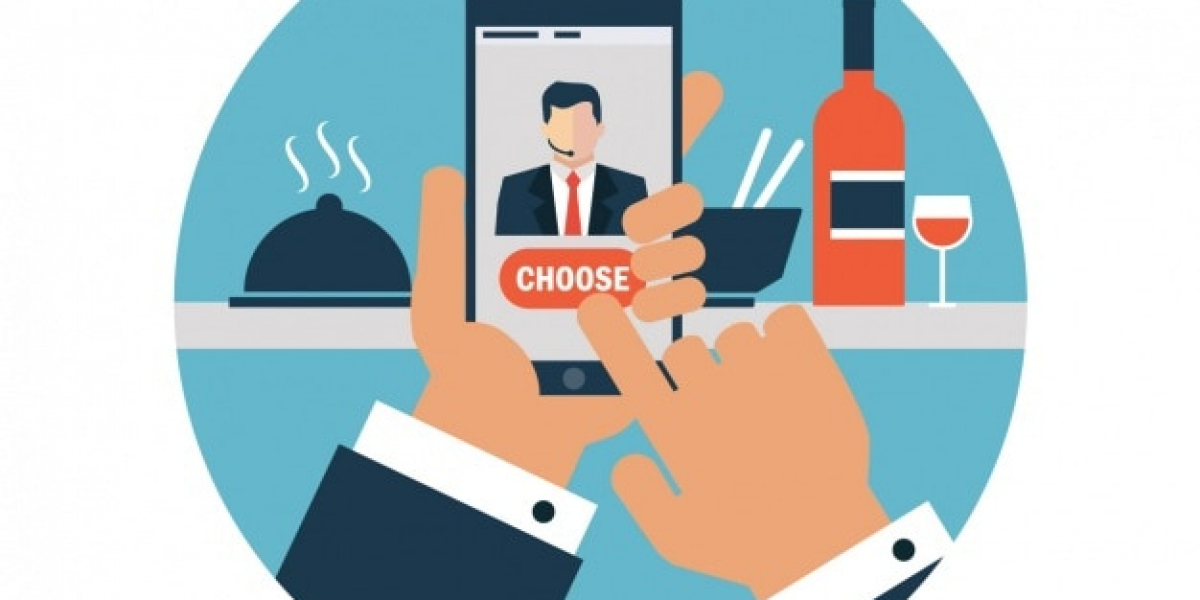In the digital age, where convenience is paramount, restaurant table booking app has become an indispensable tool for establishments aiming to enhance customer experience. As the restaurant industry continues to evolve, integrating the right features into your table booking app can make a significant difference in attracting and retaining customers. This blog explores seven essential integrations that can elevate your restaurant's table booking app, making it more user-friendly, efficient, and profitable.
Payment Gateway Integration
The Importance of Secure Transactions
In an era where online payments are the norm, integrating a reliable payment gateway into your restaurant table booking app is crucial. Customers expect a secure and seamless transaction process when making reservations. An integrated payment system not only streamlines the booking process but also builds trust among customers, as they can confidently complete their transactions without fear of fraud.
Choosing the Right Payment Gateway
When selecting a payment gateway, consider factors such as transaction fees, supported payment methods, and ease of integration. Popular payment processors like Stripe, PayPal, and Square offer robust solutions that cater to various customer preferences. Additionally, ensure that the payment gateway complies with industry security standards, such as PCI DSS, to protect sensitive customer information.
Features to Enhance User Experience
Incorporating features such as saved payment methods, one-click payments, and the ability to split bills can enhance user experience significantly. Customers appreciate convenience, and these features can help you cater to their needs while reducing friction in the booking process.
Customer Relationship Management (CRM) Integration
Understanding Your Customers Better
A robust CRM integration allows restaurants to collect and analyze customer data effectively. By understanding customer preferences and behaviors, you can tailor your services to meet their needs more accurately. This can lead to improved customer satisfaction, increased loyalty, and ultimately, higher revenue.
Key Features of CRM Integration
When integrating a CRM system, look for features such as customer profiles, booking history, and personalized communication tools. This information can be invaluable for targeted marketing efforts and promotional campaigns. For instance, if a customer frequently dines on weekends, you can send them tailored offers for weekend reservations, making them feel valued and understood.
Enhancing Marketing Efforts
CRM systems can also help you automate marketing campaigns based on customer behavior. For example, if a customer hasn’t dined at your restaurant in a while, you can trigger a re-engagement campaign with special offers or reminders, encouraging them to return. By leveraging the power of CRM, you can create a personalized experience that resonates with your customers.
Inventory Management Integration
Optimizing Operations and Reducing Waste
Integrating an inventory management system into your table booking app can significantly improve operational efficiency. This feature helps you manage table availability, menu items, and stock levels in real-time, ensuring that your staff has accurate information at their fingertips.
Real-Time Availability Updates
One of the key benefits of inventory management integration is the ability to provide real-time updates on table availability. This feature prevents double bookings and enhances the overall customer experience. Customers appreciate knowing that when they make a reservation, their table is guaranteed, which can lead to higher satisfaction rates.
Menu Management Based on Stock Levels
An integrated inventory management system can also help manage menu items based on ingredient availability. For instance, if a particular dish is running low on ingredients, the system can automatically update the menu to reflect its unavailability. This not only prevents customer disappointment but also minimizes food waste, contributing to more sustainable operations.
Analytics and Reporting Integration
Data-Driven Decision Making
In the restaurant industry, data is a powerful tool. Integrating analytics and reporting capabilities into your table booking app allows you to gather valuable insights into customer behavior, booking patterns, and operational performance. This information is essential for making informed decisions that drive growth and profitability.
Key Performance Indicators (KPIs) to Track
When selecting analytics tools, focus on KPIs that matter most to your restaurant. These may include reservation trends, peak dining times, customer demographics, and revenue per seat. By tracking these metrics, you can identify areas for improvement and capitalize on opportunities to enhance customer experiences.
Using Data for Targeted Marketing
Analytics can also inform your marketing strategies. By understanding customer preferences and behaviors, you can create targeted promotions and campaigns that resonate with your audience. For example, tailor if data shows that a particular demographic is more likely to dine during weekdays, you can promotions to attract them during those times.
Social Media Integration
Expanding Your Online Presence
Social media has become a vital marketing tool for restaurants, and integrating social media features into your table booking app can significantly enhance your online presence. Customers can share their dining experiences, post reviews, and promote your restaurant on various platforms, effectively acting as brand ambassadors.
Key Features for Social Engagement
Consider integrating sharing options for popular social media platforms like Facebook, Instagram, and Twitter. Allowing customers to post about their reservations or tag your restaurant in their photos can create organic buzz around your establishment. Additionally, you can implement social login features, enabling customers to book tables using their social media accounts for added convenience.
Encouraging User-Generated Content
Encouraging customers to share their dining experiences on social media can provide valuable user-generated content. Consider running campaigns that incentivize customers to post about their meals or share reviews in exchange for discounts or special offers. This can create a sense of community and engagement around your restaurant, attracting new customers in the process.
Third-Party Delivery Service Integration
Meeting the Demand for Convenience
As consumers increasingly seek convenience, offering delivery options through your table booking app is essential. Integrating third-party delivery services allows you to cater to customers who prefer to enjoy your restaurant's offerings from the comfort of their homes.
Selecting the Right Delivery Partners
When integrating third-party delivery services, consider partnering with popular platforms such as Uber Eats, DoorDash, or Grubhub. These services have established customer bases, which can help you reach new audiences and boost sales. Ensure that the integration is seamless, allowing customers to place delivery orders directly through your app without hassle.
Maintaining Quality Control
While integrating delivery services can expand your reach, it's essential to maintain quality control. Establish clear communication with delivery partners regarding food preparation, packaging, and delivery times to ensure that customers receive their orders in optimal condition. Additionally, gather feedback from customers about their delivery experiences to identify areas for improvement.
Loyalty Program Integration
Building Lasting Relationships
A loyalty program integration can significantly enhance customer retention by rewarding repeat business. This feature encourages customers to choose your restaurant over competitors by offering incentives for continued patronage.
Designing an Effective Loyalty Program
When designing a loyalty program, consider incorporating features such as points-based systems, tiered rewards, and exclusive offers for loyal customers. An effective loyalty program should be easy to understand and participate in, ensuring that customers feel motivated to engage with your restaurant regularly.
Promoting Loyalty Program Benefits
Make sure to promote the benefits of your loyalty program prominently within your booking app. Use push notifications and email campaigns to remind customers about their rewards and encourage them to return. Additionally, consider integrating social sharing options, allowing customers to share their loyalty program achievements with friends and family, further promoting your restaurant.
Conclusion
Integrating essential features into your restaurant table booking app is crucial for enhancing customer experience and driving business growth. Partnering with an on-demand app development company can help you focus on payment gateway integration, CRM systems, inventory management, analytics tools, social media, third-party delivery services, and loyalty programs to create a comprehensive and efficient booking solution.
These integrations streamline operations and foster customer engagement and satisfaction. In a competitive market, investing in these integrations can set your restaurant apart, ensuring a memorable dining experience for your patrons. As you move forward, continuously evaluate and optimize these integrations to meet evolving customer needs and industry trends, ensure that your restaurant remains a top choice for diners.









